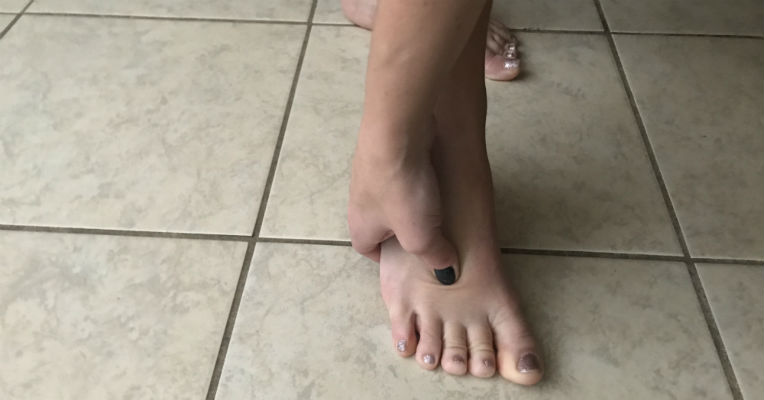The sharp pain from a leg or foot cramp can stop you in your tracks or keep you from getting needed sleep. They are no fun. Cramps are typically harmless but can be a sign of an underlying medical condition–if they become regular, notify your doctor.
Read on to find the most common causes of leg and foot cramps and what you can do to prevent and treat them.

Download Healthful Tips: How to Relieve Foot and Leg Cramps
| Potential Causes of Foot and Leg Cramps | Prevention and Treatment |
| Exercising without warming up the muscles first. | Warm up prior to exercise. Stretch and cool down afterwards. |
| A deficiency of magnesium, calcium, sodium or potassium in the diet that keeps the muscle from relaxing properly. | Eat a varied and healthful diet. Track your intake to insure you’re getting the daily recommended levels of calcium (1,500 mg after wls), potassium (4,700 mg), and magnesium (310-420 mg) Zero calorie electrolyte drinks provide sodium and potassium. |
| Too much exercise can cause a buildup of lactic acid and overexcite nerves, triggering muscles to cramp. | Ease into more intense exercise. |
| Dehydration. | Sip on calorie-free beverages between meals. Avoid caffeine and alcohol which can lead to dehydration. |
| Reduced blood flow from atherosclerosis, tight shoes, or even from cold feet sticking out from blankets constricting blood vessels. | Be mindful of wearing shoes that have room for toes to wiggle, consider wearing socks to bed, and eat a heart healthy diet to keep blood vessels working properly. |
| Nerves get confused and misfire. This is common with neuropathy, Parkinson’s disease, or spine problems that compress the nerves of the lower back. It can also happen with common foot problems such as flat arches. | Work with your doctor to minimize the impact of medical conditions on foot and leg cramps. |
| Certain drugs, like diuretics, increase the likelihood of foot and leg cramps. | Talk with your doctor about side effects of the medications you take. |
| Fatigue can trigger leg and foot cramps—tired muscles and nerves don’t function at their peak. | Get adequate high quality sleep nightly. |
| Low thyroid or hypothyroidism overtime can damage nerves leading to leg cramps. | Ask your primary care doctor to monitor your thyroid function. About 12 percent of people develop a thyroid condition. |
| Osteoarthritis, the most common type of arthritis, can cause pinched nerves in the spine leading to leg cramps. | Keep weight and blood sugar in check and exercise regularly to reduce the risk of developing osteoarthritis. |
| Diabetes can cause nerve damage. Typically, this leads to a feeling of numbness or tingling, but can also produce leg cramps when the nerves in the legs are not functioning properly. | Weight loss surgery improves or resolves diabetes and reduces the risk of further diabetic nerve damage |
| Muscle mass is typically lost with age, requiring the remaining muscle to work harder and get stressed more easily. | Keep up a regular exercise routine throughout life stages. |
| A new theory about the cause of leg and foot cramps is that they are a result of motor neurons firing uncontrollably. Strong flavors like vinegar, ginger, hot peppers, mustard and quinine all stimulate receptors that can override the inappropriate nerve firing. | Take a shot of 2-3 oz of pickle juice, tonic water, or apple cider vinegar when you experience cramps. |

